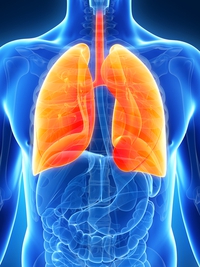Asthma

Asthma is a chronic lung disease that affects your airways. The airways are the tubes that carry air in and out of your lungs.
If you have asthma, the inside walls of your airways are inflamed.
This causes symptoms like wheezing (a whistling sound when you breathe), coughing, chest tightness and trouble breathing, especially at night and in the early morning.
When your asthma symptoms become worse than usual, it is called an asthma episode or attack.
During an asthma attack, muscles around the airways tighten and inflammation increases. Cells in the airways may create extra mucus. All of these changes make it harder to breathe.
Asthma cannot be cured, but the symptoms can be controlled, and your OSF HealthCare provider can help you prevent attacks with an asthma action plan.
With daily medication and by avoiding triggers – which can be environmental, physical or emotional – most people with asthma can live active lives.
Types of Asthma
Different types of asthma include:
- Allergic asthma
- Exercise-induced asthma
- Chronic asthmatic bronchitis
- Occupational asthma
Signs and Symptoms
Some common symptoms of asthma include:
- Wheezing, or whistling sound when breathing
- Coughing (night cough in children)
- Chest tightness
- Shortness of breath
- Colds that "go to your chest"
If you have a history of asthma as a child or it runs in your family, you are at a higher risk for asthma.
Asthma can be especially difficult for patients who are overweight or who also experience seasonal allergies, hay fever, sinus infections, bronchitis, chronic cough, gastroesophageal reflux disease (GERD), heartburn, exercise-induced bronchospasm (EIB) or vocal cord disorders.
What Causes Asthma?

The exact cause of asthma is unknown. Numerous factors can trigger asthma symptoms.
Triggers
- Common allergens – pet dander, dust and dust mites, mold, plants, pollen, fresh cut grass, cockroaches, mice
- Irritants – chalk dust, wood and cigarette smoke, perfumes, fumes from cleaning products, strong odors, cooking fumes, chemicals, air pollution
- Colds and flu
- Sinus infections
- Gastroesophageal reflux disease (GERD) or heartburn
- Food or medicine allergy
- Nasal allergies
- Aspirin or nonsteroidal anti-inflammatory drugs, such as ibuprofen, and beta-blockers.
- Exercise, especially in cold weather
- Sleep apnea
- Obesity
- Emotional reactions
- Weather changes
Who is at Risk for Asthma?
Asthma is most common in children and teens, but older adults can develop asthma, too.
If you are a symptomatic older adult, it’s important to get a diagnosis, because other diseases have symptoms similar to asthma and the treatments are very different.
Other risk factors:
- Living in a city
- Additional allergies
- A family history of asthma or allergies
- Smoking
- Exposure to secondhand smoke
- Children who have atopic dermatitis (also known as atopic eczema).
Testing and Diagnosis
Asthma is diagnosed using pulmonary function testing.
A complete history and physical also are used to establish the level of asthma severity and risk.
A spirometer is a device used to find out how well the lungs are working. It measures the amount and speed of air exhaled. Other tests may be done to check for allergies and other conditions.
Treatment
Treatment depends on your symptoms, age and general health, as well as the severity of your condition.
With proper diagnosis, medication management and trigger avoidance, your asthma can be controlled.
Creating an Action Plan
Ask your provider to help you create an action plan.
In addition to your primary care provider, your asthma health care team may include a pulmonologist (a specialist in lung disease), allergist, pharmacist, exercise physiologist, mental health care provider, a certified asthma educator and nurses.
An asthma educator is an expert in educating and counseling individuals with asthma in the skills necessary to minimize the impact of asthma on quality of life.
The goal of your plan should be to help you achieve normal daily activity with no hospital visits.
Managing your environment and lifestyle will be part of your plan. Limiting your exposure to triggers is key to controlling asthma symptoms.
Medication
Medication prescribed is long-term (most are taken every day) and short-term (quick-relief, taken as needed). Some people are prescribed one or the other; some people are prescribed both.
Most people take their medication by using an inhaler. Inhaled medicines go right to the lungs and have fewer side effects than medicines taken by mouth. More severe cases of asthma may require periodic shots.
Work with Your Doctor
In all cases, it is important to monitor your symptoms and stick to your asthma action plan.
Take your medications exactly as instructed. Go to regular checkups. Make additional appointments if you are having trouble controlling your asthma. Your team can adjust your medicines as needed